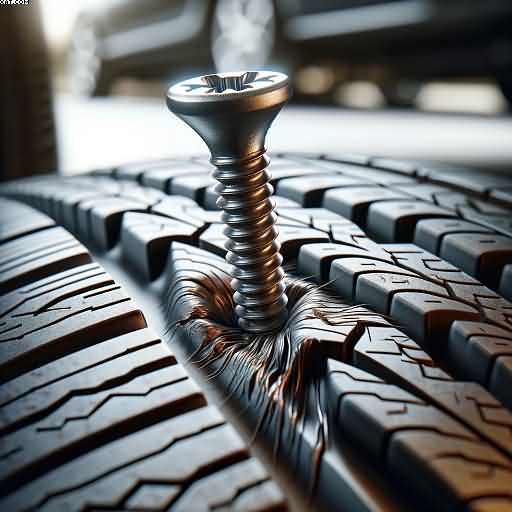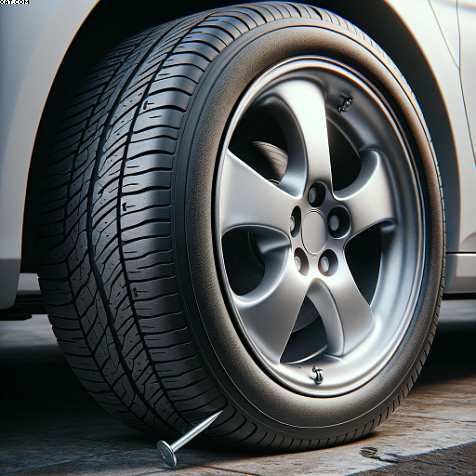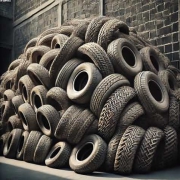Part Worn Tyres: Am I getting soft?
Table of Contents
Part Worn Tyres
Part Worn Tyres
These are very alarming figures 22%, almost a quarter of the driving public, are buying these part worn tyres
But I am now thinking differently about the problem. In my opinion, the Part Worn Tyres market has increased due to the financial crisis and a lot of young families are having to make
huge economic changes in their household budgets, but they regard their car as a sanctity, a necessity, and they will keep it running at whatever cost, even if it means running the car without insurance or road tax.
This is also where part-worn tyres come into it. If it means keeping the car running, then they will pay, say, £20 for a worn tyre. I do not think that they care about its condition; all I can say is that they must trust the person that they are buying from, as long as it gets them about and they can keep their car running.
It is the tyre industry that should make sure that the tyres that these people are using are in fact safe to use and come under the Part Worn Tyres law (under the Motor Vehicle Tyres (Safety) Regulations 1994 (reg. 7) part of the Consumer Protection Act) that we have here in the UK and probably other countries too.
17% of drivers would also keep buying part worn tyres.
In my opinion, the economic crisis has hit us all to the extent that we will probably never recover again. The retail market has changed considerably over the past years, with consumers having to make huge cuts in their spending habits. This includes everybody, and I have to admit that includes my family. We are changing our shopping habits, and the companies that are making changes to cope with the lack of consumer spending are becoming the winners.
Starting at the top of the chain, families are now shopping on a daily or twice-weekly basis. Here in the UK, the winners are becoming the smaller chains such as Lidl and Aldi, who are pushing the huge supermarket customers into second place, primarily because of the changing shopping habits of the consumers. We also have cheaper clothing retailers who are doing well in this climate; stores such as Primark are sweeping the floor with much cheaper clothing than the high-street stores, who are suffering from the general downsizing of consumers.
In my opinion, this is also the same problem that is affecting the tyre market at the moment.
Drivers at the lower end of the economic scale are forced to buy part-worn tyres to keep their cars on the road. According to the recent survey, 17% of these drivers would also consider a repeat purchase of part worn tyres, which could mean that these people are taken out of the new car tyre market altogether. There has always been a slice of the tyre market that has bought second hand tyres, but this time the increase is quite significant and is effecting many of the smaller tyre retailers up and down the country.
Fighting back with cheap budget tyres
One of the knock-on effects of this gap in the market is the price deflation of budget tyre brands. My own business has seen a sharp increase in the cheap new tyre market. The manufacturers that are suffering are in the mid-range tyre market, and the leading companies appear to be holding their own, we are still getting our customers asking for their favourite brands. These are usually the older drivers that are known as the “Silvers,” and that includes me?
These are the drivers that will stick to Michelin and Dunlop and can still afford to pay the price for them.
I am only forming my opinion on the facts that are affecting my tyre business here in Halifax Yorkshire UK. But asking about and travelling around has opened my eyes to the fact that the number of part-worn tyre bucket shops that have opened up in the last few years has quadrupled. The increase in these operations has opened my eyes to the extent of our industry-wide problem. We seem to be more at the battle front in the poorer northern towns, especially the ones with a large immigrant population, such as Halifax.
Part worn tyres are also affecting the large companies
This problem probably multiplies the more depots that you own , so huge tyre companies such as kwik-Fit must be pulling their hair out, in fact This recent survey was financed by Kwik-Fit, and its findings were released to the rest of the industry. Roger Griggs of Kwik-Fit said…
“This research highlights the problems that British drivers have experienced with part worn tyres. Many of the second hand tyres sold in the UK are brought in from Europe by the container-load, having been taken off cars across the Channel. Motorists considering a part worn tyre should perhaps ask why a tyre that is no longer good enough for a Dutch, German or Danish driver would be good enough for them.
‘We recognise that drivers are keen to keep their motoring costs low, and we work hard to provide products and services to help them do that. There comes a point where cutting costs can compromise safety and this is especially true with tyres. After all, these are the only thing connecting a car with the road, so we urge drivers to consider whether they really need to opt for the unknown quality of second hand tyres.”
My problem with part worn tyres is the number of tyres that were found to be failing due to the damage that was already present
Of course, when the tyres were fitted to the new customer’s car,. This is due to the fact that tyres that are sold are not sold legally. Here in the UK, we have a set of rules that state that part worn tyres should be tested for any faults, damage, or objects in the tyres, and the tyres should be checked while under pressure. Then, after the tyre is checked and found to OK, a special patch should be stuck (vulcanised) to the tyre with the name of the company or tester displayed on the tyre.
I now know that the effect of part worn tyres on the businesses of reputable tyre retailers
Having forced them to start selling these part worn tyres themselves, and in a way, I cannot blame them. One guy that I know has set up a separate small depot specifically for selling these tyres. He has kept the two companies separate for obvious reasons, but at least he is now clawing some of the lost business back, and he is also running the operation within the current part worn tyre laws.
I can now understand better the predicament that many people find themselves in. Forced by financial circumstances to buy these second-hand tyres. So, I think that we have all been affected by this crisis and will be for some time to come.
We now believe that they is a place for part worn tyres, but they must be bought and sold within the law, and we must get rid of these people who sell all the rubbish and dangerous tyres by strengthening the current laws and, more importantly, by clamping down on these dodgy tyre businesses that sell this rubbish through stronger law enforcement.












